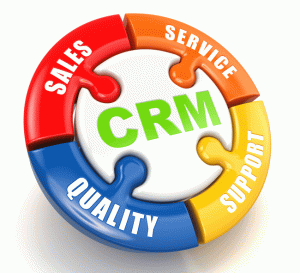Tags
Client relationship management Perth, harvard business review crm, Sales staff optimisation, salesforce service perth
In the early days of Customer Relationship Management (CRM), deployment was limited to a single platform: a physical server. Although physical deployments still have their place, the introduction of virtualization and cloud technologies have made it much easier for small and medium-sized businesses to achieve a level playing field with large companies. Before you embark on a CRM initiative, however, you should weigh the pros and cons of each environment.
Physical Server
If your game plan is to implement an on-premises solution, you can’t go wrong with a physical environment. For most companies, the limiting factor is the upfront investment. Physical servers require a great deal of start up capital, and it’s difficult to justify the expense when you consider the overall cost of a physical server throughout its life cycle. When you’ve covered the initial investment, you still have operational expenses to cover, including upgrades and maintenance, as well as the cost of software licensing.
Of course, if your CRM system is hosted in house, you’re the one who’s in control. That means improved security and, depending on your industry, fulfilment of legislative or regulatory requirements. On-premises solutions are also easier to integrate with enterprise applications and allow for a greater breadth of customization than cloud solutions.
Virtual Server
Virtual servers have many of the same pros and cons as physical servers. You’re still hosting your own CRM system, which means you’re in control of your data, you’re in a much a better position to achieve industry compliance, and you’re the one specifying hardware and network performance.
Of course, if you lack the upfront capital to implement an on-premises solution, virtualization is probably not an option. Although a virtual server costs less to operate over the long term, a hypervisor still runs on top of a physical environment, and a virtual server may cost more initially than a physical server to implement because of hardware requirements. You can’t expect to run a virtual platform on a conventional server unless you want to oversubscribe physical resources and create bottlenecks. Memory, CPU, storage, and network resources must be fine-tuned to suit the specific needs of your virtual environment.
Software as a Service
The advantages and disadvantages of the public cloud are almost the opposite of an on-premises solution. SaaS has a minimal barrier to entry because of its low cost of implementation, which makes it ideal for small businesses that lack start up capital. The down side is that you’re putting the control of your CRM Software Services Perth system almost entirely in the hands of a third party. Unlike a private cloud, the resources in the public cloud are accessible to anyone who has an Internet connection and a subscription to the service, and that raises a lot of questions for companies concerned about security and data compliance.
If you would like to know how you can improve your Customer Relationship Management strategy, processes and software and are interested in working with consultants that are local, guaranteed and deliver solutions that are simplified, you should get in contact now to book an obligation-free appointment at Visit: http://crmperth.com.au/contact-us/ and do a mail enquiry@CRMperth.com.au you can feel free to call us: (08) 6102 7284.


